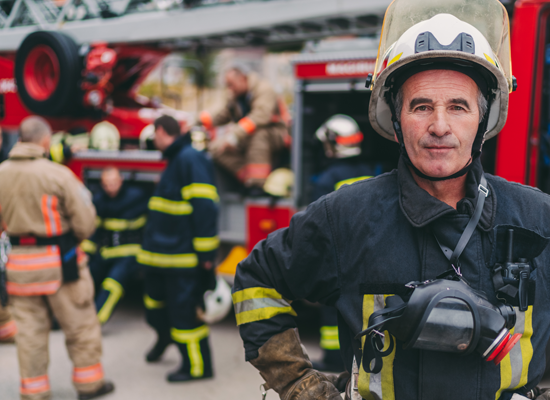Pipeline Safety
Damage a pipeline? Leave the area and contact Dakota Natural Gas at 888-933-9743.
More than 3 million miles of pipelines traverse the United States. Formed in 2018, Dakota Natural Gas continues to expand operations into rural North Dakota serving a wide variety of customers, from individual households to large commercial customers. Transporting natural gas efficiently and safely is our top concern.
That’s why we maintain a Damage Prevention Program in accordance with state and federal guidelines. The program is designed to prevent damage to our pipeline and facilities from excavation activities, including digging, trenching, blasting, boring, tunneling, and backfilling.
How to Recognize the Location of a Pipeline
Markers are located in the pipeline right-of-way and indicate the approximate location, but not the depth, of a buried pipeline. Although not present in certain areas, these can be found at road crossings, fence lines, and street intersections. The markers display the product transported in the line, the name of the pipeline operator, and a telephone number where the operator can be reached in the event of an emergency.
Digging around a Pipeline
State laws require you to maintain minimum clearance, or tolerance zone, between the point of excavation and a marked pipeline. The tolerance zone is a defined horizontal space from the outside wall or edge of an underground line or pipe. The size or width varies by state and is defined in the individual state One Call legislation.
Even the most minor damage to a pipeline can have serious consequences. If you cause or witness even minor damage to a pipeline or its protective coating, do not cover up or attempt to repair the pipeline. Evacuate the area and call 911 and Dakota Natural Gas at 888.933.9743.
If a Leak Occurs
We invest significant time and capital maintaining the quality and integrity of our pipeline systems. Field personnel continually monitor the pipeline system and are available for immediate response to any incident or leak.
If a leak occurs, emergency personnel should take whatever steps necessary to protect the public during a pipeline emergency. The following suggestions are offered only as a guide.
Secure the Area around the Leak
This could include evacuating people from homes, businesses, schools and other locations as well as erecting barricades to prevent access to the emergency site.
Prevent Ignition of a Pipeline Leak
This could include rerouting traffic, shutting off electricity and residential gas supply by qualified individuals or preventing ignition sources from entering the emergency site.
Contact Dakota Natural Gas as quickly as possible
Do not operate any valves, as this action could escalate the emergency. We will dispatch personnel to help and aid the response to the emergency. Our team will take the necessary actions, such as starting and stopping pumps, opening or closing valves, and similar steps to minimize the impact of the situation.
Dakota Natural Gas makes our Emergency Spill Response Plan information available to Emergency Responders upon request. We invest significant time and capital maintaining the quality and integrity of our pipeline systems. Field personnel continually monitor the pipeline system and are available for immediate response to any incident or leak.
Request a Training
Our professional team offers training to fire departments, law enforcement, and dispatchers. Get in touch today to schedule a training session for your team. Click Contact Us and submit a request to learn more.
Your Team Deserves the Best Training
We want to help.
TAKE ADVANTAGE – Our Natural Gas Experts will train your team for free.
We are dedicated to safety and we sincerely appreciate the critical role emergency responders play in our communities. We want to help your team and will send our natural gas experts to your facility and host a free training session. Take the first step and contact us today.

Get in touch with the natural gas safety team at Dakota Natural Gas to get your safety questions answered. If you smell gas or have a natural gas emergency, call us immediately at 888.933.9743.
North Dakota One Call
Are you utilizing the North Dakota One Call or 811 system? You must call in locates at least two business days prior to doing any digging on your property. By following this important step, you will prevent service interruption for both you and your neighbors.

Safety Tip
As you are spring cleaning, take a few minutes to clean around your furnace and water heater! Never store rags, boxes, newspaper, chemicals or paint cans around these appliances.
